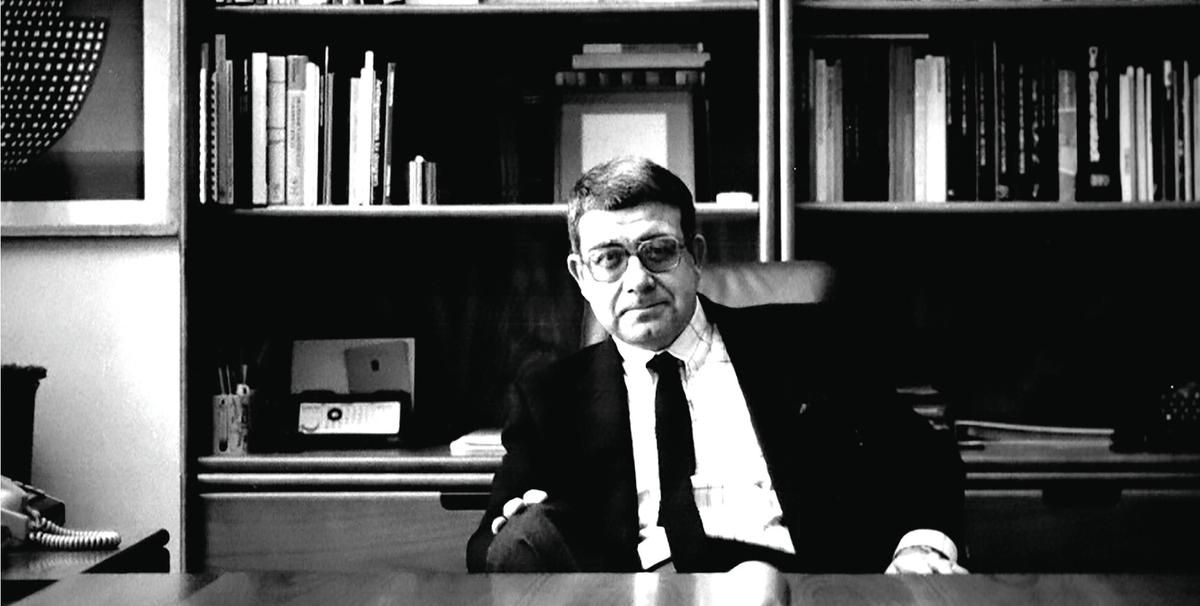For nearly 30 years Paolo Viti, who died in early February, aged 82, played a major role in the staging of loan exhibitions shown around the world, firstly during his employment at Olivetti—the manufacturer of office equipment and portable typewriters so stylish that they are in international design museums—and from 1990 with Fiat at the Palazzo Grassi in Venice.
Olivetti and culture
Born in La Spezia in March 1935, Viti received a doctorate in economics from Venice University and joined Olivetti in 1956. Working in its marketing division, he was employed in Milan, Germany and then for ten years in the Netherlands. In 1971 he returned to Milan and joined Olivetti’s department of design, corporate image and cultural affairs as deputy to Renzo Zorzi, who had himself overseen the Frescoes from Florence exhibition (funded by Olivetti) in the late 1960s.
Two years after the arrival of Carlo De Benedetti at Olivetti in 1978, Viti was appointed Olivetti’s director of design and in the following year he became the director of publicity and corporate image, assuming Zorzi’s full role on the latter’s retirement in 1986. De Benedetti was responsible for increasing Olivetti’s cultural budget, and throughout the 1980s and 1990s Viti was largely responsible for overseeing the numerous exhibitions toured by them in these years, including The Horses of San Marco, The Treasury of San Marco Venice, Leonardo: Studies from the Last Supper from the Royal Library at Windsor Castle, Glass of the Caesars and Michelangelo: Draftsman/Architect. Extraordinary treasures were thus transported (often for the first time) to locations around the world—including Milan, Florence, London, Amsterdam, Paris, Barcelona, Madrid, Munich, Cologne, Berlin, New York, Washington, DC, Toronto, Mexico City, Sydney and Tokyo.
Good design allied to social and cultural support was fundamental to the ethos of Olivetti at this period. In addition to the exhibitions, Viti was closely involved with several Italian state conservation campaigns, for which Olivetti provided crucial funding. Chief among these were Leonardo’s Last Supper in Milan and the frescoes by Masaccio, Masolino and Filippino Lippi in the Brancacci Chapel in Florence. Viti ensured that the publications (issued by Olivetti) to accompany each exhibition and restoration campaign provided lasting records of those projects.
In the late 1980s Viti persuaded Olivetti to provide essential start-up funding for the ambitious multi-disciplinary project to catalogue—and publish—the surviving elements of the paper museum of the 17th-century Roman patron and collector Cassiano dal Pozzo. The funding covered the costs of a conference at the Warburg Institute and British Museum in December 1989, an exhibition at the latter institution in 1992, provision of computers, and the publication of papers from the London conference, and the catalogue of the British Museum exhibition. In later years the Cassiano project (run by the Royal Collection, where the majority of the surviving drawings remain) was able to attract funding from the Getty and other generous donors. The first catalogue appeared in 1996; 26 further volumes have since appeared; the remaining nine volumes are due to appear before the end of 2018. Without Viti’s faith in, and enthusiasm for, the project in its infancy, it is unlikely that any of this would have happened.
Fiat and the Palazzo Grassi
At the end of 1989 Viti left Milan to become the director of cultural activities at Palazzo Grassi, the Venetian palace purchased by Fiat in 1983. In his first year with Fiat, he organised the exhibition Lion of Venice, shown at the British Museum (with Fiat’s support) during the Italian state visit to the UK. But he will probably be chiefly remembered for the series of exhibitions on historical and broad cultural themes (Celti, Etruschi, Greci in Occidente, I Maya), as well as Leonardo & Venezia, and the extraordinarily innovative exhibition of architectural models and other artefacts shown in 1994: the Renaissance from Brunelleschi to Michelangelo: the Representation of Architecture. That exhibition was followed in 1999—the year of Viti’s debilitating stroke—by Triumph of the Baroque: Architecture in Europe, shown in Turin and then in North America. The last 17 years of his life, deprived of the power of speech (but still retaining his unique sense of humour), must have been deeply frustrating for him, but he was wonderfully cared for (at their home in Merano) by his wife Franca.
Viti commissioned the design for the majority of the exhibitions with which he was involved—at both Olivetti and Fiat—from the British architect Alan Irvine, resulting in displays that were enjoyed by vast numbers of visitors. Irvine writes: “Of the people I worked for none could compare with Paolo for his professionalism and understanding. Having carefully chosen his designer, he rarely interfered in the design of the exhibition. To him the design solution was paramount. For Paolo, a successful exhibition was one that did its job in communicating the subject accurately and enjoyably to the visitors, supported by an excellent catalogue, and thus promoting the name of Olivetti, and later of Fiat. As a result of this patronage he raised the standard of museum design and communication, which I think must be his most significant contribution.”
The work involved in securing loans for such exhibitions involved Viti in international travel on a huge scale. With the support first of Olivetti, and then of Fiat, he was able to reassure potential lenders that their property would be safe in his hands; that the numerous costs involved in the loans (including conservation) would be covered; that nothing would be left undone. Because of Paolo’s persuasive charm, generosity and evident trustworthiness, museum directors, curators and academics around the world moved from being colleagues to close friends. I count myself fortunate to have been one of these and delighted in his company—whether in Windsor, London, Milan, Venice, Florence, Rome, Paris or New York. And with millions of other visitors to the exhibitions he created, I was able to see and enjoy things that he brought together—for us—from all corners of the world. We owe him a huge debt.
• Paolo Viti, born 1935, died 2017


